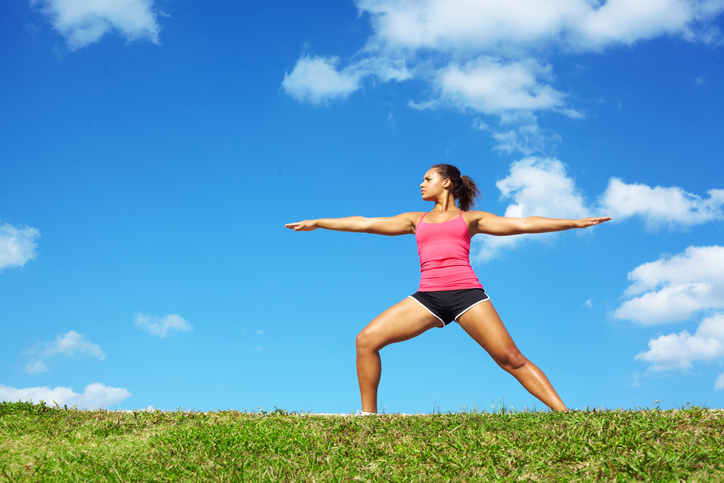 It’s that time of the month. You’re irritable, exhausted and maybe even nauseated. While finding refuge on the couch in fetal position may seem like the move, believe it or not, hitting the gym - the last thing on your mind - is the way to go for alleviating common symptoms associated with your period.
It’s that time of the month. You’re irritable, exhausted and maybe even nauseated. While finding refuge on the couch in fetal position may seem like the move, believe it or not, hitting the gym - the last thing on your mind - is the way to go for alleviating common symptoms associated with your period.
Here’s what you should know.
1. Exercise can help alleviate symptoms.
While exercise won’t necessarily lighten your flow, it can help lessen symptoms associated with PMS, such as unsightly belly bloat, headache, fatigue, cramps and breast pain due to swelling.
According to a study published in the Crescent Journal of Medical and Biological Sciences, after investigating the relationship between premenstrual syndrome (PMS) and physical activity, aerobic power, and anaerobic power in 367 female high school students – 40 students of which “had the highest PMS score,” researchers found a promising correlation between physical activity and menstrual woes.
“It can be concluded that lifestyle modification with an emphasis on increasing physical activity, especially aerobic activities, can be effective in reducing PMS,” the study reads.
Meanwhile, the results of another study showed that people performing moderate exercise are protected from this syndrome altogether.
The American Heart Association suggests a minimum of 150 minutes moderate exercise per week or 75 minutes per week of vigorous exercise (or a combination of moderate and vigorous activity). Thirty minutes a day, five times a week is an easy goal to remember.2. Cardio is the right move.
If you’re looking to calm symptoms, your best bet is to hop on the treadmill, rather than strength training. Research shows a direct connection between aerobic activity and the severity of PMS symptoms. In other words, when you increase aerobic exercise, PMS symptoms decrease. However, when researchers analyzed the same hypothesis with anaerobic power—like strength training—they found no significant correlation between the two.
According to experts, this occurs because your body temperature lowers when you're on your period, thanks to a drop in hormones. By increasing the amount of time it would take to tire yourself out, those sprints are going to feel easy breezy.
3. The risk of injury is low.
While researchers have found that women are more likely to suffer an injury during certain stages of their cycle, the risk increases during days 9 to 14 of a 28-day cycle (the first day of your period is considered day one of your menstrual cycle). In other words, after your monthly visitor. Those same findings also indicate that neuromuscular training can cut that risk in half. Scientists suggest this happens because there’s a difference in the way a woman's knees move during menstruation compared to ovulation.
In short, fear not the gym ladies – go all in!









